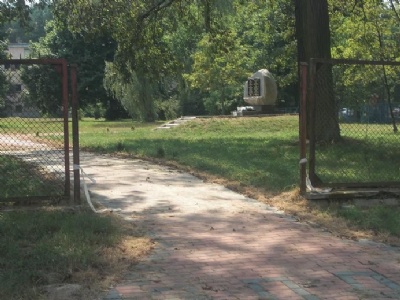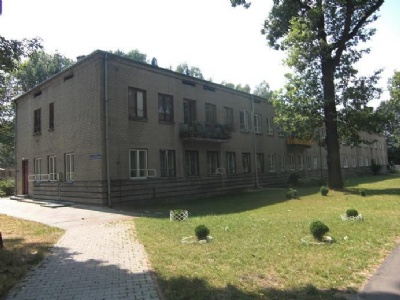Poniatowa
In a small town called Poniatowa, about fourty kilometres west of Lublin, a prisoner of war camp was established in autumn, 1941. The camp was called Stalag 359 and set up in former factory premises and hosued Soviet soldiers. About 22,000 prisoners of war died during the winter of 41/42 as a result of starvation, disease, forced labour or were murdered by camp guards. They were buried in the outskirts of the camp in 32 mass graves. About 500 prisoners of war volunteered to serve in the SS and was sent to the camp in Trawniki for military training. Some of these came to serve as camp guards in one of the extermination camps set up in eastern Poland.
In October 1942, the camp was taken over by the SS who set up a labor camp for about 1,500 Jews from the ghetto in Opole. The camp was called, SS Arbeitslager Poniatowa, and was organized under the Lublin district’s supreme SS and police chief, Odilo Globocnik. In May 1943 as a consequence of the uprising in the Warsaw ghetto. Another 15,000 Jews were deported from various places to Poniatowa. The consisted of around 30 barracks and the majority of the prisoners were forced to work in a textile factory moved from the ghetto in Warsaw to Poniatowa. The main task was to produce military clothing for the German armed forces. Other prisoners were forced to work with various work both inside and outside the camp.
The first commandant of the camp was Gottlieb Hering, who later became commander of the Belzec extermination camp. Hering was succeeded by Otto Hantke who had about 600 ukrainians at his disposal to guard the camp. The camp’s administration, however, consisted of about 40 German SS officers. A resistance movement was established within the camp which, ready to fight if the camp was to be liquidated. In September 1943, weapons were found in the camp, which inevitable led to harsher measures against the prisoners.
As a consequence of the uprisings in the ghettos of Warsaw and Bialystok and uprisings in Treblinka and Sobibor extermination camps some 14,000 Jewish prisoners were killed, November 3, 1943. This murder operation was ordered by SS chief, Heinrich Himmler, and has been called Erntefest (Harvest festival). In addition to Poniatowa, about 18,000 Jews were murdered in Majdanek and about 10,000 Jews killed in Trawniki. All three camps were located in the Lublin district and under the control of Odilo Globocnik. After the murders in Poniatowa, the SS tried to force about 200 prisoners to cremate the corpses, but refused and was murdered. The camp was abandoned in July 1944 as the Soviet army approached. A few prisoners survived Poniatowa.
Current status: Partly preserved/demolished with monument (2010).
Location: 51°10'34.06"N 22°04'18.86"E
Get there: Car.
Follow up in books: Kogon, Eugen: The Theory and Practice of Hell: The German Concentration Camps and the System Behind Them (2006).








The camp was not destroyed by the SS and after the war the premises were taken over for industrial purposes. The premises where the SS administration was located became residential buildings. After the fall of communism, the area fell into disrepair and is today a combination of dilapidated industry and residential area. Several of the former factory premises are now empty and around former camp area dilapidated camp poles can be found.
Until 2008, there was no monument on site, which created protests considering that about 14,000 Jews were murdered in the camp. The only monument on site was one commemorating Soviet prisoners of war who died in the camp. But in 2008, a monument was erected next to the former camp entrance for the Jews and others who were murdered or imprisoned in the camp. The Soviet monument is located at the place where they were buried and is more or less in disrepair.